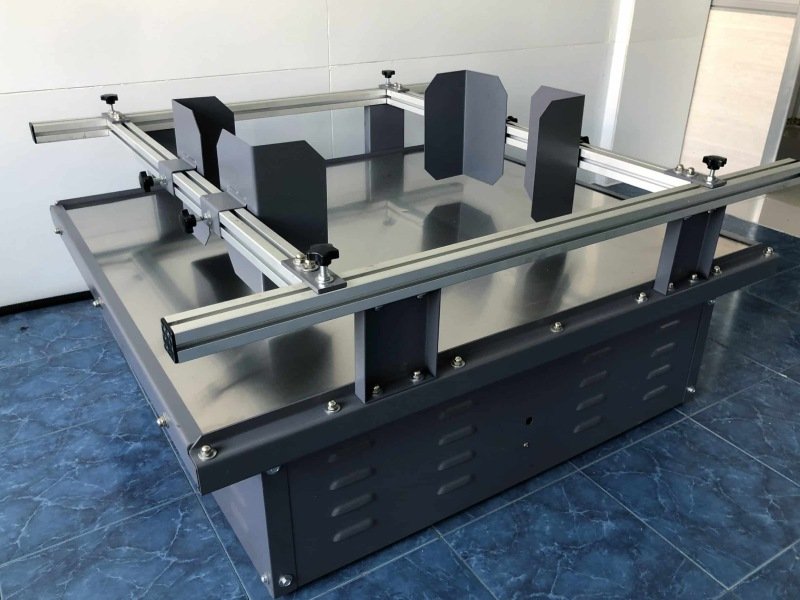Electrical enclosures are critical components in industrial, commercial, and residential settings, protecting sensitive electrical equipment from environmental hazards, unauthorized access, and operational disruptions. The latching mechanism used to secure these enclosures plays a pivotal role in ensuring safety, accessibility, and functionality. Two primary categories of latches dominate the market: key-operated latches ja no-key access latches. Each type offers distinct advantages and trade-offs, making the choice between them dependent on specific application requirements, security needs, and operational preferences.
This article delves into a detailed comparison of key-operated and no-key access latches for electrical enclosures, exploring their design, functionality, security features, ease of use, environmental suitability, and more. By the end, you’ll have a clear understanding of which latching solution best suits your needs, whether you’re securing a utility box in a remote location, a data center cabinet, or an industrial control panel.
Understanding Electrical Enclosure Latches
Before diving into the comparison, let’s define what electrical enclosure latches are and their role in protecting equipment. An electrical enclosure latch is a mechanical or electromechanical device designed to secure the door or panel of an enclosure, ensuring it remains closed until intentionally opened. Latches work in tandem with hinges and, in some cases, locks to maintain the integrity of the enclosure’s seal, prevent unauthorized access, and protect internal components from dust, moisture, vibration, or tampering.
Latches can be broadly categorized into two types:
- Key-operated latches: These require a physical key (or sometimes a tool, like a hex or triangular key) to lock and unlock the enclosure. They prioritize security and restricted access.
- No-key access latches: These include mechanisms like wing knobs, quarter-turn latches, compression latches, or magnetic catches that don’t require a key, focusing on ease of access and convenience.
Each type serves distinct purposes, and choosing the right one depends on factors like security requirements, environmental conditions, frequency of access, and regulatory compliance (e.g., NEMA or IP ratings).
Key-Operated Electrical Enclosure Latches
Design and Functionality
Key-operated latches are designed to provide a high level of security by restricting access to authorized personnel only. These latches typically incorporate a lock cylinder that engages a cam, rod, or multi-point latching system to secure the enclosure door. Common designs include:
- Cam locks: A key rotates a cam to engage or disengage the latch, often used in electrical housings or meter boxes.
- Quarter-turn key locks: These require a 90-degree turn of the key to lock or unlock, combining simplicity with security.
- T-handle or L-handle locks: These feature a handle that doubles as a lock, requiring a key to lift or turn. They’re common in outdoor enclosures due to their robust design.
- Multi-point locking systems: These use a key to engage multiple latching points (e.g., three-point systems), ensuring a tight seal and enhanced security for larger enclosures.
Key-operated latches often come in variations like keyed alike (multiple latches use the same key), keyed different (each latch has a unique key), or master keyed systems for centralized control.
Advantages of Key-Operated Latches
- Enhanced Security: The primary advantage of key-operated latches is their ability to restrict access. This is critical for enclosures housing high-voltage equipment, sensitive electronics, or proprietary systems, where unauthorized access could lead to safety hazards or data breaches.
- Tamper Resistance: Keyed latches are harder to manipulate without the correct key, reducing the risk of vandalism or tampering, especially in outdoor or public settings like utility boxes.
- Lainsäädännön noudattaminen: Many industries require restricted access to electrical enclosures to meet safety standards (e.g., OSHA, NEC, or UL 508A). Key-operated latches help ensure compliance by limiting entry to qualified personnel.
- Customizable Security Levels: With options like cylinder locks, high-security keys, or multi-point systems, key-operated latches can be tailored to specific security needs. For instance, complex pin configurations in cylinder locks deter picking attempts.
- Durability in Harsh Environments: Keyed latches are often made from robust materials like stainless steel or zinc alloy, with IP or NEMA ratings (e.g., IP65, NEMA 4X) to withstand dust, moisture, and extreme temperatures.
Limitations of Key-Operated Latches
- Key Management Challenges: Physical keys can be lost, stolen, or duplicated, posing logistical issues in large facilities with multiple enclosures. Master key systems mitigate this but require careful oversight.
- Slower Access: Unlocking a keyed latch takes longer than operating a no-key latch, which can be a drawback in scenarios requiring frequent or rapid access, such as maintenance-heavy environments.
- Maintenance Needs: Lock cylinders may accumulate dust or debris, requiring periodic cleaning or lubrication to prevent jamming. Harsh environments can exacerbate wear on moving parts.
- Kustannukset: Key-operated latches are generally more expensive due to their complexity and the inclusion of lock mechanisms, especially for high-security or multi-point systems.
- Emergency Access Issues: In emergencies (e.g., power outages requiring immediate access), locating the correct key can delay response times, unlike no-key latches that allow instant entry.
Tyypilliset sovellukset
Key-operated latches are ideal for:
- Outdoor electrical enclosures (e.g., utility substations, telecom cabinets) where vandalism or unauthorized access is a concern.
- High-security environments like data centers, where sensitive equipment must be protected from tampering.
- Industrial settings with hazardous equipment, ensuring only trained personnel can access live circuits.
- Public infrastructure, such as meter boxes or traffic control cabinets, where restricted access is mandated.
No-Key Access Electrical Enclosure Latches
Design and Functionality
No-key access latches prioritize ease of use and quick access, making them suitable for applications where security is less critical than operational efficiency. These latches come in various forms:
- Quarter-turn latches: A simple 90-degree turn of a wing knob or handle secures or releases the latch, often used in indoor cabinets.
- Compression latches: These apply pressure to compress gaskets, creating a tight seal against dust or moisture. They’re operated by hand or a tool, not a key.
- Push-to-close latches: These engage automatically when the door is closed, using mechanical or magnetic force, ideal for low-security applications.
- Spring-loaded latches: A spring mechanism holds the door closed, releasing with a pull or twist, commonly used in lightweight enclosures.
- Magnetic catches: These use magnets to hold the door shut, offering seamless operation for non-secure cabinets.
No-key latches are typically simpler in design, with fewer moving parts, and are often flush-mounted to reduce visibility and improve aesthetics.
Advantages of No-Key Access Latches
- Ease of Access: No-key latches allow quick opening and closing, which is essential in environments requiring frequent maintenance or inspections, such as manufacturing plants or server rooms.
- Lower Cost: Without lock cylinders or key systems, no-key latches are generally more affordable, making them a cost-effective choice for large-scale deployments.
- Vähäinen ylläpito: With fewer components, these latches are less prone to jamming or wear, requiring less upkeep than keyed systems.
- User-Friendly Design: No-key latches are intuitive, requiring no training or key management, which simplifies operations in multi-user settings.
- Vibration Resistance: Compression and spring-loaded latches excel in environments with high vibration (e.g., HVAC systems or industrial machinery), as they maintain a secure seal without relying on a lock.
Limitations of No-Key Access Latches
- Lower Security: Without a locking mechanism, no-key latches offer minimal protection against unauthorized access, making them unsuitable for high-security or public-facing enclosures.
- Vulnerability to Tampering: In outdoor or unsupervised settings, no-key latches can be easily opened with basic tools or force, increasing the risk of vandalism or theft.
- Limited Regulatory Compliance: Environments requiring strict access control (e.g., electrical cabinets with live circuits) may not permit no-key latches due to safety standards.
- Environmental Constraints: While some no-key latches (e.g., compression latches) offer IP or NEMA ratings, others, like magnetic catches, may not provide adequate sealing for harsh conditions.
- Aesthetic Trade-Offs: Visible knobs or handles can detract from the sleek appearance of an enclosure, especially in design-sensitive applications.
Tyypilliset sovellukset
No-key access latches are best suited for:
- Indoor enclosures like server racks or control panels, where security is managed by facility access controls rather than individual latches.
- Frequent-access environments, such as maintenance bays or production lines, where speed is prioritized over security.
- Low-risk settings, like storage cabinets for non-sensitive equipment, where ease of use is paramount.
- Vibration-prone applications, where compression latches ensure a tight seal without the complexity of a lock.
Comparing Key-Operated and No-Key Access Latches
To help you choose the right latching solution, let’s compare the two types across key criteria:
1. Security
- Key-Operated: Offers superior security through restricted access, tamper-resistant designs, and options for multi-point locking. Ideal for high-risk or regulated environments.
- No-Key Access: Provides minimal security, suitable only for controlled or low-risk settings. Vulnerable to tampering without additional safeguards.
Winner: Key-operated latches, for their ability to prevent unauthorized access.
2. Ease of Use
- Key-Operated: Requires a key, which can slow access and complicate operations in high-frequency scenarios. Key management adds complexity.
- No-Key Access: Excels in user-friendliness, with quick, intuitive operation that doesn’t rely on keys or tools.
Winner: No-key access latches, for their speed and simplicity.
3. Cost
- Key-Operated: Higher upfront cost due to lock cylinders, multi-point systems, and robust materials. Key replacement or rekeying adds to long-term expenses.
- No-Key Access: More affordable, with simpler designs and no key-related costs, making them economical for large installations.
Winner: No-key access latches, for their cost-effectiveness.
4. Maintenance
- Key-Operated: Requires periodic cleaning and lubrication of lock cylinders, especially in dusty or humid environments. Lost keys or worn locks may need replacement.
- No-Key Access: Low maintenance due to fewer moving parts, though some designs (e.g., springs) may wear out over time in high-use settings.
Winner: No-key access latches, for their minimal upkeep.
5. Environmental Suitability
- Key-Operated: Often designed with IP65, NEMA 4X, or higher ratings, making them suitable for outdoor, wet, or dusty conditions. Stainless steel or zinc alloy options enhance durability.
- No-Key Access: Varies widely—compression latches can match keyed latches in sealing, but magnetic or basic quarter-turn latches may not withstand harsh environments.
Winner: Tie, as both can be tailored to specific environmental needs.
6. Regulatory Compliance
- Key-Operated: Aligns with standards requiring restricted access (e.g., UL 508A, OSHA), making them mandatory in many industrial or public applications.
- No-Key Access: May not meet strict access control requirements, limiting their use in regulated settings.
Winner: Key-operated latches, for their compliance with safety standards.
7. Aesthetic Considerations
- Key-Operated: Flush-mounted or low-profile designs (e.g., quarter-turn locks) can blend seamlessly, though some handles may protrude.
- No-Key Access: Wing knobs or handles may be more visible, potentially clashing with sleek enclosure designs, though flush options exist.
Winner: Key-operated latches, for their discreet options.
Emerging Trends and Alternatives
While key-operated and no-key access latches dominate, emerging technologies are reshaping enclosure security:
- Electronic Locks: These combine keyless convenience with high security, using keypads, RFID cards, or biometrics. They’re ideal for advanced installations but require power and higher investment.
- Smart Locks: Offering remote access and monitoring via smartphone apps, smart locks bridge the gap between security and convenience, though they’re costlier and less common in industrial settings.
- Hybrid Systems: Some enclosures use a combination of keyed and no-key mechanisms (e.g., a keyed lock with a quick-release latch) to balance security and accessibility.
These alternatives may appeal to users seeking flexibility, but traditional latches remain dominant due to their reliability, simplicity, and lower cost.
Choosing the Right Latch: Key Considerations
Selecting between key-operated and no-key access latches requires a thorough assessment of your needs. Here are key factors to guide your decision:
- Security Requirements: If protecting sensitive or hazardous equipment is critical, opt for key-operated latches. For low-risk, controlled environments, no-key latches suffice.
- Access Frequency: High-frequency access favors no-key latches for speed, while infrequent access aligns with keyed latches for security.
- Environment: Outdoor or harsh conditions demand IP/NEMA-rated latches, available in both categories but more common in keyed designs.
- Talousarvio: No-key latches are more cost-effective for large deployments, while keyed latches justify their cost in high-security scenarios.
- Regulatory Needs: Check industry standards (e.g., NEC, UL) to ensure compliance, which often mandates keyed latches.
- User Base: Consider who will access the enclosure—trained technicians may handle keyed systems well, while diverse users benefit from no-key simplicity.
- Future-Proofing: If scalability or technology integration (e.g., smart locks) is a goal, explore hybrid or electronic options.
Practical Examples
To illustrate the decision-making process, consider these scenarios:
- Outdoor Utility Substation: A remote electrical box housing high-voltage equipment requires a key-operated, multi-point latch (e.g., NEMA 4X-rated T-handle lock) to prevent tampering and ensure safety. No-key latches would be too vulnerable.
- Indoor Server Room: A data center cabinet in a secure facility can use no-key compression latches for quick maintenance access, as building security already restricts entry.
- Industrial Control Panel: A factory panel accessed daily by technicians might use a no-key quarter-turn latch for convenience, but if it contains proprietary controls, a keyed latch adds protection.
- Public Meter Box: A meter box in a residential area needs a key-operated cam lock to deter vandalism, with a master key system for utility workers.
Päätelmä
The choice between key-operated ja no-key access latches for electrical enclosures hinges on balancing security, accessibility, cost, and environmental demands. Key-operated latches excel in high-security, regulated, or outdoor applications, offering robust protection against unauthorized access and tampering. However, they come with higher costs, maintenance needs, and slower access times. No-key access latches shine in controlled environments requiring frequent access, delivering simplicity, affordability, and low maintenance, but they fall short in security-critical scenarios.
By assessing your specific needs—security level, access frequency, environmental conditions, and regulatory requirements—you can select the latching solution that best safeguards your equipment while optimizing operational efficiency. As technology evolves, consider emerging options like electronic or smart locks for future-proofing, but for now, traditional key-operated and no-key latches remain reliable, versatile choices for securing electrical enclosures.
Whether you’re protecting a utility substation, a data center, or an industrial panel, the right latch ensures safety, compliance, and peace of mind. Choose wisely, and your enclosure will stand as a fortress for your critical systems.







